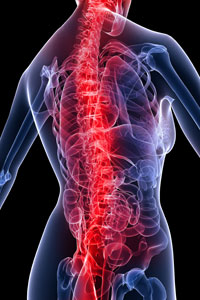![]()
Pain
Chronic pain is estimated to effect as many as 50 million Americans. The cost of pain to our country is $1 billion as a result of lost workdays and unnecessary hospitalizations, etc.
If you are one of the millions of American suffering from chronic pain, Neurosurgical & Spine Institute and Center of Spine in Savannah provides treatment options that can help minimize the toll that pain takes on your life.
Treating Pain
Intrathecal pain delivery
Intrathecal drug delivery is a pain management method intended for those suffering from back pain. It is only recommended when nonsurgical treatments have failed. A thin, flexible tube (catheter) that is connected to a pump delivers small but effective amounts of pain medication to the intrathecal space surrounding in the spinal cord.
The
pump is surgically placed into the abdomen. One end of the catheter is
inserted into a pump and the other end into the targeted treatment area. 
Because this procedure is invasive, complications may include infections, bleeding, pain and discomfort around the implant site, and blood (known as "hematoma") or fluid (known as "seroma") in the pocket where the pump is implanted. It is important that you discuss the potential risks, complications, and benefits of intrathecal drug delivery with your doctor prior to receiving treatment, and that you rely on your physician's judgment. Only your doctor can determine whether you are a suitable candidate for this treatment.
Dorsal column stimulation
Dorsal column stimulation, also called spinal cord stimulation, is used in complex cases of back pain that cannot be resolved nonsurgically or with another surgery. In most cases, it is used when leg pain is worse than back pain. The intent of dorsal column stimulation is to use an electrical signal instead of drugs to mask pain that cannot be removed any other way. It is important to note that this technique is only used in the most extreme cases of back and leg pain.
During this procedure, the patient is awake, and the surgeon delicately places tiny electrodes under the skin in the back. At that point, a small electrical current is transmitted through the wires to the desired location in the back. This sensation feels like a tiny tickle, as the electrical current interrupts the pain signal that may be sent to the brain from the damaged nerve. The patient helps instruct the surgeon as to which electrical setting and placement of wires produces the most pain relief.
[top]







